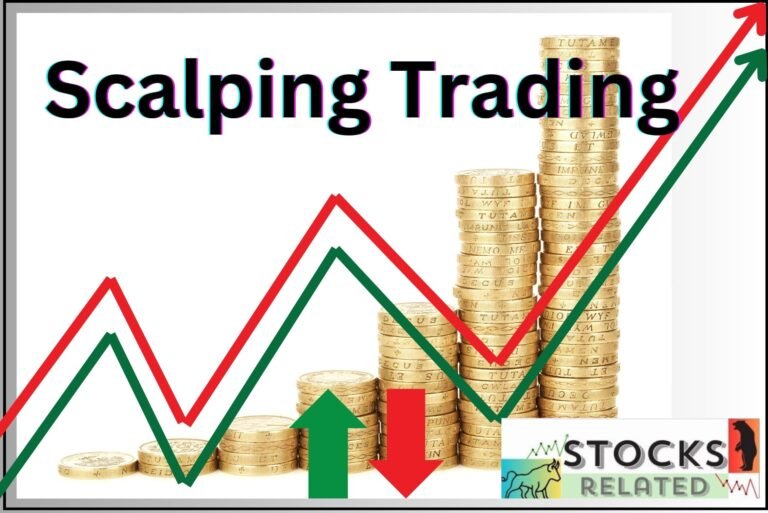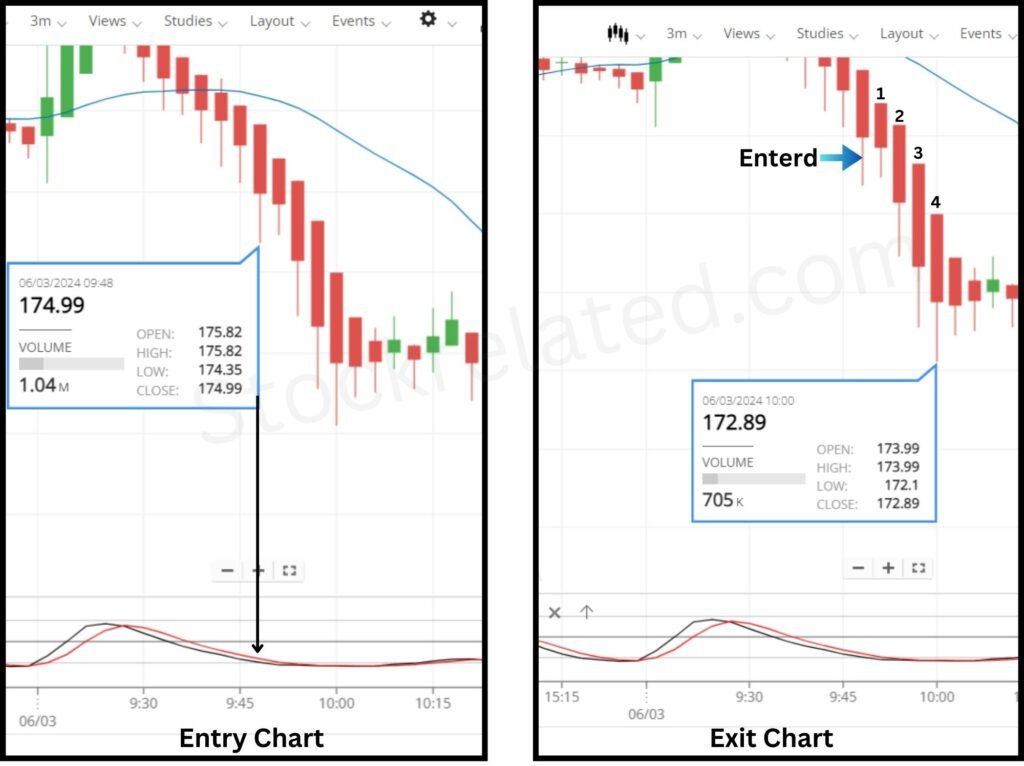Scalping Trading Strategy: All time Winning Strategy

Table of Contents
Scalping Trading in a Sentence
In Scalping Trading, a trader buys and sells securities multiple times within a short time, needless to say, in the hopes of making small profits on each trade.
Let’s understand some facts about Scalping Trading
- It’s a good trading method and it’s often seen as being less risky than other trading strategies because you’re not holding onto things for a long time.
- Mostly, scalping is unaffected by market trends, that is, if the market is up-trending you can bet on the short side, and vice-versa, this is possible because scalping involves quick buying and selling.
Next, not to deter you, but let’s jot down the possible boundaries of this strategy as perhaps you can guess
- Scalping Trading is not for all beginners.
- The larger the Scalping Trading time frame, the larger the risk.
- This strategy is best suited for those who can make quick decisions. If you’re not fast on your feet, it’s best not to attempt it.
How to do Scalping Trading
Now that we’ve established the fundamentals of scalping trading, let’s look into the practical aspects. This includes exploring suitable setups, analyzing the effectiveness of specific technical indicators, and identifying strategies that balance risk and reward.
We’ve been actively involved in the stock market for the past 10 years, exploring various technical indicators, candlestick patterns, and oscillators through trial and error, reading, and study. This led me to develop a setup using Moving Averages and Stochastics that we find straightforward and seemingly effective in my personal trading experience.
Please thoroughly review the trading setup details below, ensuring strict adherence to all rules and indicators provided.
Disclaimer for the beneath Setup of Scalping Trading: “However, it’s crucial to remember that markets are complex, and past performance doesn’t guarantee future results. we encourage everyone to conduct thorough research, practice paper trading, and seek professional guidance before making real-world decisions. The market is Supreme.”
Scalping Trading setup in detail
Here’s a step-by-step guide on how to adjust settings on a chart.
- Use Candle: Heikin Ashi
- Time frame: 3 minutes
- Indicators:
- Moving Average (simple moving average): 20 days
- Stochastic Oscillator: keep all its variables as it is i.e. {14, n,3,3}

Above are visual representations illustrating the preceding instructions.
Now that you’ve set up the chart, let’s look for Entry signals.
Set Of Rules For Entry
Rule Number 1: To enter a trade for buying, ensure the candle is positioned above the Moving Average. Conversely, for selling the candle should be below the Moving Average.
Rule Number 2: Next, We have to read the signals of the Stochastic Oscillator. If you want to know more about this oscillator you can click here.
Rule Number 3:
- Wait for at least 15-30 minutes after opening the market
- Wind up the trade 15-30 minutes before closing the market
Above are visual representations illustrating the preceding instructions.
EXIT Rule (King of Scalping)
“Now that we’ve covered where to Enter, it’s time to focus on Exit Point. As scalpers, speed is crucial, as some professionals exit within the same candle. However, according to our setup, we’ll Exit at the fourth candle, typically within 12 to 15 minutes.”
“Remember, knowing when to get out of a trade is more crucial than knowing when to get in. Make sure you decide on your exit strategy before you even enter scalping trading. Many traders spend a lot of time figuring out when and where to enter trades but forget about planning their EXIT. This mistake often leads to trading losses.”
STOP-LOSS
“Let’s talk about another crucial aspect of trading: The Stop-Loss. In this setup, Stop-Loss will be the Low of the previous candle for buying and the High of the previous candle for selling”
Let’s see some scalping trading examples as per the above Setup
Example 1: Buying(Buy)
Live Market Example – Stock Name: Bank of Baroda Ltd. (Date: Feb 21, 2024)
The visual representation below displays real-time trading charts

1. Entry
- Candle was above the Moving average ( Rule Number 1).
- Stochastic indication (Rule Number 2).
- It passed 30 minutes since the opening of the market (Rule Number 3).
Note: You can see that the moving average indicator given the signal on the candle of 9:42 am, and even stochastic too. But we waited till 9:45 am. Why? One wise & Important day trading rule says, to wait for at least 15-30 minutes after opening the market because let the market settle first.
2. Stop-Loss
In this trade, Stop-Loss will be Low of the Previous Candle.
3. Exit
As per our Scalping Setup strategy, the 4th candle or Max 5th candle should be our Leave point. As one can count, it takes 12-15 minutes, which means in ∼15 minutes you should be out from Scalping trade.
Profit Calculations for the above Scenario
- Entry Point: 274.5 (Low of the Entry candle)
- Exit Point: 277.15 (High of the Exit candle)
- Profit booked ~ 2.7 Points
Example 2: Selling (Short)
Stock Market Live Sample- Stock Name: IOC (Indian Oil Corporation Ltd.) (Date: Mar 6, 2024)
Downward is an illustration of IOC live Scalping Trading

1. Entry
- Entered the candle at 9:48 a.m. as per Our Rule Number 3
- The Entry Candle is below the Moving average as per our Rule Number 1.
- Stochastic indication Rule Number 2.
2. Stop-Loss
Here, Stop-Loss will be the High of the Previous Candle.
3. Exit
- As a scalper, our Exit is fixed even before our entry point, right? So in this trade, we booked Profit on 4th candle and Exited from our Scalping.
- If you want to succeed in scalping, ensure to set your exit before entering a trade. Doing so significantly increases your chances of winning. Moreover, this strategy isn’t limited to scalping; recommend applying it to any form of trading, be it swing or intraday.
Let’s calculate profits for the overhead Stock
- Short Sell(Entered): 175.8 (HIGH-Entry Candle)
- Buy(Exited): 172.1(LOW-Exit Candle)
- One can Calculate ~ 3.7 Gain Points
Limitations of this Scalping Trading Setup
- While this setup has worked fantastically for us and our friends, we realized it’s important to share it with all of you. However, it does come with a limitation: you have to manually search for this pattern in your day trading stock list.
- This setup works best with stocks that have good volume; avoid trading with low-volume stocks. Additionally, you can trade in Nifty 50 and Junior Nifty.
- In this setup, the Exit rule and Stop-Loss act as your allies, or you could say they are your saviors.
- Lastly, it’s important to note that while this setup performs well under normal conditions, it doesn’t guarantee success in the face of unexpected events such as wars, natural calamities, or other unforeseen circumstances.
Summary
- Scalping is a way of trading where you buy and sell things quickly throughout the day, aiming to make small profits each time.
When you are doing scalping you should have to keep an eye on that trade, close monitoring is crucial.
- It’s often seen as being less risky than other trading strategies because you’re not holding onto things for a long time, but it’s still important to be aware of the risks involved in any kind of trading.
More than Entry, Exit is important in Scalping Trading.
- If the scalper follows the Market trend, then there are high chances of getting more profit.
- The important point in scalping trading is, that the risk is higher when you increase your time frame.
- Remember the Rules of scalping trading as per our setup:
- Time frame 3 minutes
- Use Candlestick: Heikin Ashi
- Candles should be Above or Below the Moving average for Buy/Sell respectively (Rule Number 1).
- Exit is at Max 4th Candle (Very Important)
- Use a Stochastic Oscillator (Rule Number 2)
- Wait for at least 15-30 minutes after opening the market and Wind up the trade 15-30 minutes before closing the market. (Rule Number 3)
- Don’t be greedy be Smart and Wise.
Happy Trading!
Frequently asked Questions(FAQ)
Yes, if you trade with discipline and employ a trading strategy that offers a high chance of winning. One more thing we’d like to add is that scalping is typically executed within very short timeframes, so it’s advisable to exit as early as possible.
This trading method is a form of scalping that operates on a one-minute time frame. This entails entering, exiting, and booking profits swiftly. It’s a low-risk scalping approach.
Success in Scalping hinges on the size of your position and multiplying it by the difference between buying and selling prices.
Let’s explore this with a 1.5-point gain in scalping. Now, if our quantity size is 1000, our profit amounts to 1500 (excluding charges) in just 12 minutes. Sounds promising, doesn’t it
After trying various trading methods such as intra-day and swing trading, I’ve found scalping to be the most effective. Utilizing small time frames increases the likelihood of successful trades.
While some claim scalping isn’t suitable for beginners, others find it straightforward and confidence-building for novices. In our opinion, whether you’re a beginner or experienced, discipline is paramount in the stock market. So, please maintain discipline while trading.
Both methods have their advantages and disadvantages, but according to experts, scalping is considered less risky compared to traditional trading.
Not necessarily, but if you increase your time frame, the risk increases as well.
Another point to consider: when you’re engaged in scalping, any unexpected bad news such as War, Natural Disasters, or any unlikely situations can arise. In such moments then (that minute) who will save you? do you know who? your only savior is the ‘Stop Loss’.
Not necessarily. If you’re experienced and following a specific strategy, it’s crucial to adhere strictly to its rules, including entry, exit, and stop-loss criteria. Keeping these aspects in mind and following a systematic approach can help in scalping.

Thanks, I have recently been looking for info about this subject for a while and yours is the greatest I have discovered so far. However, what in regards to the bottom line? Are you certain in regards to the supply?
Pingback: Moving Average - stocksrelated.com
Hi my family member I want to say that this post is awesome nice written and come with approximately all significant infos I would like to peer extra posts like this